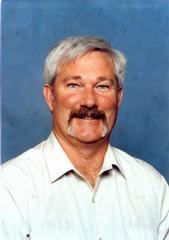
Stewart: walking the talk Stewart Somerville owns an Alternative Power company, and even he had problems installing his own wind turbine. With building code issues, parts compatibility problems and technical expertise required, what hope is there for the rest of us?Stewart writes: We live off-grid near Cedar City and in the winter we always run short,meaning we have to start a generator to get us through the days of cloudy weather. Although we only need to start the generator three to five times a year, it will take the load off the batteries, extending their life.
So we decided to installed a 3 kilowatt wind generator on our home.The first hurdle we had to overcome was to get the building permit. As hard as the building department tried they were unsuccessful at denying a permit. I really think they were just giving me a hard time. We had our permit after a few rounds.
We had to submit the foundation drawings, plot drawing and equipment specs. The building department required an engineering stamp on the foundation drawings. The plot drawing I did on Turbo Cad just to make it look neat. On the equipment specs we highlighted the model we were using.
The next hurdle was getting a hole dug that would meet our needs. We live in a rock pile and sometimes you only get down a few inches before you can go no deeper. It took five different tries to get the hole we needed. The hole had to be 10.5′ X 10.5′ X 5′ deep. The foundation was a pad and pier type. It took eight yards of concrete.
We welded the rebar reinforcement together. Some would tie wire it but with all the stress on the rebar to get it in place we decided to weld it. Once we had the rebar and grounding in place we called for an inspection of the foundation.
Once the concrete was poured and had 28 days to harden, we were finally ready for the erection of our wind turbine. After checking with several people who had different turbines – the Whisper 500, Proven and Kestrel – we were convinced the Kestrel product was the right one for us. We decided on the Kestrel 3000 watt turbine. It is a robust and well built unit. As the wind picks up, the blades feather back, allowing less blade area catching the wind. This allows the turbine to maintain full output at high wind speeds.
To compare a few points of the Kestrel and Whisper 500, the Whisper 500 weights around 155 pounds where the Kestrel is around 450 pounds. Yes, we had to pay for that extra weight. But we expect the production of the Kestrel will outperform and outlast the Whisper 500.
We also went with a mono tower with no guy wires. Although we had the area, the mono tower was a lot better looking and required fewer holes to dig. A mono tower does cost more and there are a few companies out there that are really cheap compared to what the supplier is recommending. Do not buy a tower just on price. Look at the specs very closely. If it is under-engineered, you may have your turbine come down in high winds.
As we unpacked the turbine and started to mount it to the tower, we discovered a problem – the holes did not exactly line up. We had to drill a few of the holes out to line up all the bolts. Thanks for good neighbors who have the right tools or we would have had to go to town. We needed a 5/8″ drill bit and there was not one on the truck.
Once we got the turbine mounted to the tower we proceeded to mount the blades. Always checking the instructions (there are never enough pictures in these things) to be sure we did not miss anything we were finally ready for the tail. The Kestrel is an upwind model and requires a tail to keep the blades in the wind.
At the bottom of the tower we mounted a junction box and a brake switch. Engaging the brake switch will keep the turbine from turning while we raise the tower. And if we ever need to take the tower down, we can just engage the switch, unhook the wires from the controller, and let the tower down without the turbine spinning.
NEVER work on a turbine when it is turning. Safety first here, folks. And never try to let a tower down in high winds.
The crane showed up on time and we were ready to stand the tower. It took a couple of tries to get things just right. But once it was we stood the tower just like the pros. We leveled the tower by adjusting the nuts, tightened it down and hooked the wires up to the controller.
The next task was to mount the voltage limiter and controller. This went as smooth as could be. It was finally time to flip the switch. Where is that wind when you need it? The wind did finally pick up and we were producing electricity.
It was 16 years in the making but we now have a wind turbine.
Stewart Somerville is owner of Alternative Power Systems in Cedar City. He can be reached at 435-586-9181 or by e-mail: stewart@cedarcity.net. His Web site is www.apssolar.com.
Auto Amazon Links: No products found.


One Response
Was the turbine that you chose enough to take a normal house completely off the grid? Or is your solar panels also required to keep your house electrified?? Thinking about erecting one at my Grandparents place out in the middle of no where in farm country where the wind never stops. What was the price of your turbine my Grandfather thinks that it will be over 30 thousand dollar investment from what I am seeing online it is far far less then that.